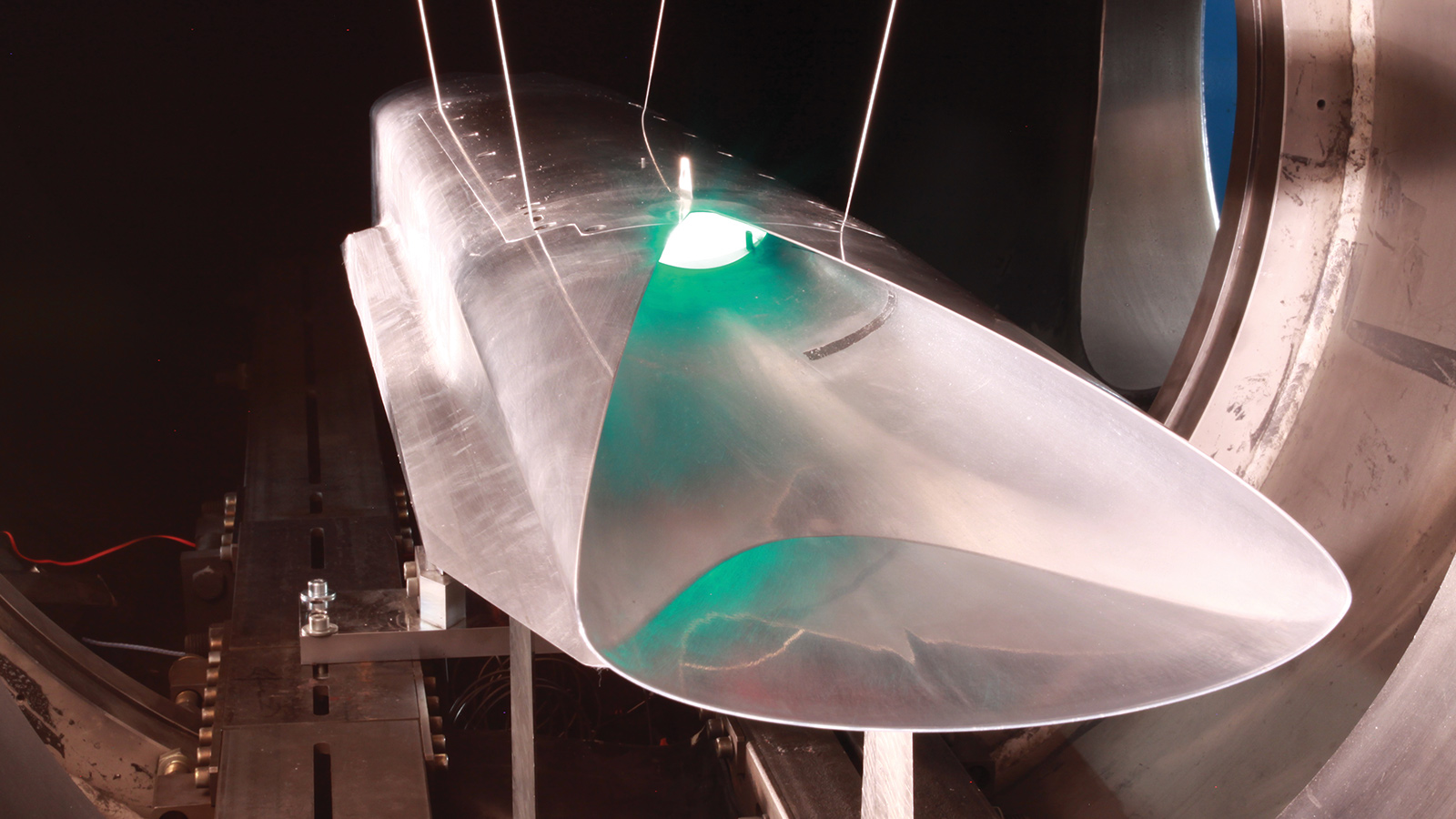Stay Up to Date
Submit your email address to receive the latest industry and Aerospace America news.
The High-Speed Air-Breathing Propulsion Technical Committee works to advance the science and technology of systems that enable supersonic and hypersonic air vehicle propulsion.
The Stratofly Project, after two and a half years of research funded by the European Union, accelerated experiments on the pollutant emission quantification of hydrogen-fueled scramjet engines for civilian Mach 8 flight. The project aims to assess the potential of hypersonic civilian aircraft to reach Technology Readiness Level 6 on the 9-point internationally recognized readiness scale by 2035, meaning the technology would be tested in a relevant environment. Keys are to prove the technological, societal and economic aspects, specifically: thermal and structural integrity, subsystems design and integration including smart energy management, environmental aspects of combined propulsion cycles impacting climate change, noise emissions and social acceptance, and economic viability accounting for safety and human factors.
In July, the European Commission representatives announced the funding of the More&Less project, short for Multidisciplinary Optimization and Regulations for Low-boom and Environmentally Sustainable Supersonic aviation. The project was proposed by major partners of the Stratofly project and leading U.S.-based high-speed aviation companies with the aim of developing supersonic aircraft concepts with low noise and climate impact through intensive research in the fields of experimental and numerical studies of aerodynamics, jet-noise, sonic-boom, propulsion and pollutant emissions as well as environmental impact and eventually integrating all outcomes into the multidisciplinary holistic framework.
In January, Space Engine Systems of Edmonton, Canada, signed a memorandum of understanding with Spaceport Cornwall in the United Kingdom ahead of integrated testing onboard a modified conventional two-seat fighter body comprising two air-breathing engines and one rocket engine. Plans call for reaching an altitude of 98,000 feet (30 kilometers) in air-breathing mode before transitioning to an off-the-shelf rocket engine to reach low-Earth orbit. Space Engine Systems ground tested its complete DASS GN1 engine (Mach 4.2-5): heat exchangers, compressor, combustor, turbine, multi-fuel afterburner injection, ramjet and mixed nanoparticle-LNG and LH2/Jet A fuels at a simulated altitude of approximately 30 km. Titanium and magnesium alloys facilitated high-temperature heat exchangers.
DLR Lampoldshausen in Germany focused on investigating new composite materials for the flame holders of scramjet combustors. From January to late March, several material combinations were tested at typical boundary conditions of a Mach 5.5 to Mach 6 flight. Some material samples were tested to destruction on purpose. The experiments were conducted to investigate the applicability of transpiration cooling systems in scramjets and the phenomena resulting out of the interaction between a wedge-flame holder and coolant secondary flow. When the covid-19 pandemic hit in the middle of March, the efforts were shifted to upgrading the facility in a mix of home office and at-site tasks. The break was used to upgrade the air vitiator test bench’s data acquisitioning systems and to upgrade the existing optical measurement equipment by improving the in-house Background Oriented Schlieren code and by adding new components to the setup.
China reported that it developed a new scramjet, which was demonstrated in ground tests to run continuously for 600 seconds. This is expected to increase the range of the DongFeng (DF)-17 boost-glide hypersonic weapon from 2,000 km to 10,000 km. This long-duration operation is attributed to advances in fuels and active engine cooling technologies.
In September, DARPA and the U.S. Air Force announced completion of captive carry tests of two variants of the HAWC, short for Hypersonic Air-Breathing Weapon Concept advanced air vehicle. The joint effort seeks to develop an effective and affordable air-launched hypersonic cruise missile. The upcoming flight tests will focus on hydrocarbon scramjet-powered propulsion and thermal management techniques to enable prolonged hypersonic cruise. The flight data collected is intended to increase the confidence in air-breathing hypersonic systems. Lockheed Martin’s HAWC demonstrator is powered by an Aerojet Rocketdyne scramjet engine while Raytheon’s demonstrator is powered by a Northrop Grumman scramjet combustor.
Contributors: Jesse Kadosh, Kevin Kremeyer, Bayindir Saracoglu and Friedolin Strauss
Related Posts
Stay Up to Date
Submit your email address to receive the latest industry and Aerospace America news.




